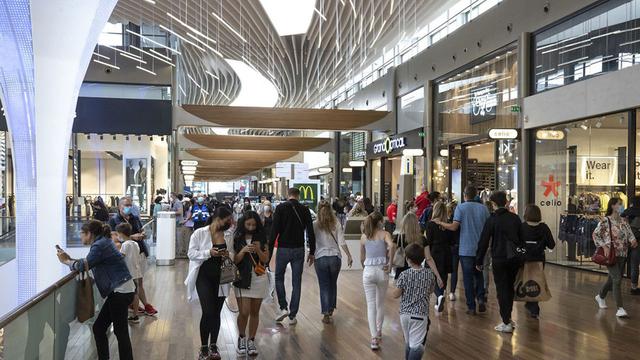
Deconfinement: customers back in stores
At the time of deconfinement, the businesses that reopened filled up. The growth recorded is in double or even triple digits, compared to 2019. Professionals are counting on Mother's Day and the sales to keep the momentum going.
Consumers attended the reopening of so-called “non-essential” businesses. Whether they are located in the city center or in shopping centres, the stores have seen the start of the rebound in sales. The employees did not hide, either, their satisfaction at returning to their work.
"The first day [Wednesday May 19, Editor's note] was very good", notes Yohann Petiot, general manager of the Alliance du commerce, an organization which brings together 760 major brands and 26,000 points of sale of personal equipment, from Zara in spring. “According to our panel, Retail Int, activity was 155% higher than on the same day in 2019, with traffic up 62%.” A store operator testified: “It was like a Saturday in December. »
Men, women and children
Customers came to buy. And, unlike what happened when the previous confinements were lifted, all product families entered the basket. Children's clothing is the top seller. The children have grown up. But women's and men's ready-to-wear did well too.
The boom then died down a bit. But over five days, until May 23, the growth was still 88%. The Trade Alliance notes that the recovery was roughly equivalent in all types of location: city centers, shopping centers and commercial activity areas, with traffic growing by 32% on average.

Rebound also in shopping centers
The National Council of Shopping Centers confirms the rebound with a 27% increase in attendance, including Pentecost Monday, compared to 2020, on a scope which excludes the largest complexes which only reopened last year at the beginning of June . In the regions, around thirty prefects have conveniently granted the authorization to open on Sundays. "This performance was achieved when restaurants could only sell take-out and cinemas had a strict gauge," said Gontran Thüring, the general delegate. The only downside: attendance at “malls” remained down 8% from its 2019 level…
Among the brands, FNAC and Darty were driven by editorial products (comics and manga), particularly boosted by the announced generalization of the Culture Pass, by televisions in anticipation of the Euro football tournament, household goods and toy games.
At Westfield Vélizy 2, the Unibail Rodamco Westfield liner in western Paris, Jonathan Toulemonde, the director, talks about “double-digit” growth and even three (100% to 140%) for children's clothing stores. Contrary to indications from the Trade Alliance, he does not see the rebound weakening over the days and evokes “a dynamic that will crescendo”.
Queues on boulevard Haussmann
In Vélizy, the gauge (one customer for ten square meters in the aisles, one for eight in the shops) has never reached its maximum. This was not the case on boulevard Haussmann, in the heart of Paris, stronghold of department stores. At Galeries Lafayette, where there is also talk of double-digit growth, despite the persistent absence of the bulk of foreign customers, queues have formed on the sidewalks at times.
Everywhere, professionals underline the deep joy and “pleasure” of the staff who found their activity. “In business, we like people. The teams are getting their lives back”, comments Armelle Dablin who runs the Yves Rocher boutique in Vélizy 2. Jonathan Toulemonde even speaks of “the euphoria of being together again”.
Keeping up the shopping frenzy
It remains to be seen whether the rebound is the effect of a one-time catch-up or whether it will last? For merchants, Mother's Day on May 31 should keep the buying frenzy going. After this date, they count on the summer sales. They are due to start on June 23. Independent traders have asked for a postponement, in order to continue selling at full margins. The big brands want to sell their stocks.
The government must decide this on May 26 or 27. A compromise could be found on the date of June 30. Traders, on the other hand, are hostile to the “territorialization” mentioned by Jean Castex. “The sales must create a general momentum,” argues Gontran Thüring.







